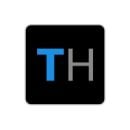Artificial intelligence has reshaped how organizations identify, evaluate and engage talent, leading to the rise of companies built around AI-driven recruiting capabilities. These providers use machine learning, natural language processing and large language models to analyze candidate data, automate repetitive tasks and surface insights that support faster and more consistent hiring decisions.
The following AI recruiting companies are bringing talent acquisition into the modern age by enhancing the hiring process through sourcing, talent intelligence, candidate screening, interview analysis and workflow automation.
Top AI Recruiting Companies
- Built In
- Manatal
- Eightfold AI
- Paradox AI
- hireEZ
- SeekOut
- Textio
- TurboHire
- Humanly
- Leoforce
Built In provides employers with an AI-recruiting platform that focuses on the entire candidate hiring journey taking place in AI search tools like ChatGPT, Google and Perplexity. Its all-in-one platform helps companies understand, track and improve their brand reputation and visibility so they can win across the funnel end-to-end. Built In combines AI employer brand intelligence, optimized content, analytics and job distribution in one end-to-end solution.
Best fit for: SMB and enterprise companies who want a single solution to enhance their employer brand and visibility in the AI tools that candidates rely on throughout the entirety of their job search — from awareness to consideration to offer selection.
See how your employer brand is performing in AI tools like ChatGPT and Google.
Paradox AI focuses on workflow acceleration through short-form conversational exchanges designed for rapid qualification. Its system identifies essential eligibility criteria, availability patterns and basic role requirements to reduce lag in fast-moving hiring environments, optimizing for speed and friction reduction rather than multi-layered candidate assessment.
Best fit for: High-velocity hiring environments that require rapid triage and streamlined applicant movement.
SeekOut is a talent intelligence platform that uses AI models to gather skills, refine candidate profiles and support advanced talent search. Its system analyzes large datasets to produce structured insights for sourcing, workforce planning and diversity analysis. The platform emphasizes AI-driven discovery and skill-based matching across broad talent pools.
Best fit for: Organizations that need AI-supported talent search and intelligence across technical and specialized roles.
Textio applies natural language processing and machine learning to analyze job descriptions and workplace communications. Its system identifies language patterns linked to candidate engagement and provides predictive scoring to highlight potential bias or unclear phrasing. The platform focuses on linguistic insights that help standardize written hiring content.
Best fit for: Teams that need data-driven language analysis to refine job descriptions and internal communication.
Manatal is a recruiting platform that integrates AI for resume parsing, candidate scoring and profile enrichment. The system emphasizes structured evaluation by extracting key attributes from applicant data and generating ranked shortlists. Its workflow tools combine basic automation with AI-driven recommendations.
Best fit for: Teams needing an ATS with lightweight AI scoring and straightforward implementation.
Eightfold AI is a talent intelligence platform built on deep-learning models that infer skills, map career trajectories and assess role fit. Its system analyzes large volumes of workforce data to produce structured recommendations for hiring, internal mobility and workforce planning. AI modeling sits at the core of all major functions.
Best fit for: Enterprises prioritizing skills-based decision making across hiring and mobility.
hireEZ is an outbound recruiting platform that applies AI to talent search, profile enrichment and candidate recommendations. Its models infer skills, surface relevant prospects from multiple data sources and generate ranked results that support sourcing workflows. The system focuses on AI-driven discovery rather than traditional inbound applicant management.
Best fit for: Teams that rely on proactive sourcing supported by AI-generated candidate intelligence.
TurboHire uses automation frameworks to coordinate screening tasks, communication steps and candidate movement across pipelines. Its system evaluates incoming applications for completeness, relevance signals and workflow triggers rather than acting primarily as a parsing engine. The platform emphasizes process orchestration and consolidation across mid-size teams.
Best fit for: Teams seeking operational automation that ties together multiple screening and workflow actions.
Humanly uses conversational AI to conduct structured screening, capture candidate responses and automate interview workflows, applying natural language processing to extract signals from chat interactions and produce standardized summaries for recruiters. The system centers on automating early-stage evaluation and reducing manual data entry.
Best fit for: Teams managing high-volume early screening that benefit from AI-driven conversation analysis and workflow automation.
Leoforce, the company behind the AI recruiting advisor Arya, applies multi-model ensemble techniques to compare historical hiring outcomes with current candidate attributes. Its system weights behavioral indicators, experience patterns and role trajectories to estimate fit probability without relying solely on keyword alignment. The platform emphasizes predictive modeling based on long-term hiring data.
Best fit for: Organizations that prioritize predictive scoring informed by historical hiring behavior and long-term performance patterns.
Frequently Asked Questions
What data do AI recruiting companies use?
Depending on the tool, data sources may include applicant tracking system records, public candidate profiles, historical hiring outcomes, job descriptions, conversational transcripts or assessments.
What types of tasks can AI automate in recruiting?
Common recruiting tasks automated by AI include resume parsing, candidate ranking, interview summarization, conversational screening, sourcing recommendations, workflow routing and language analysis.















